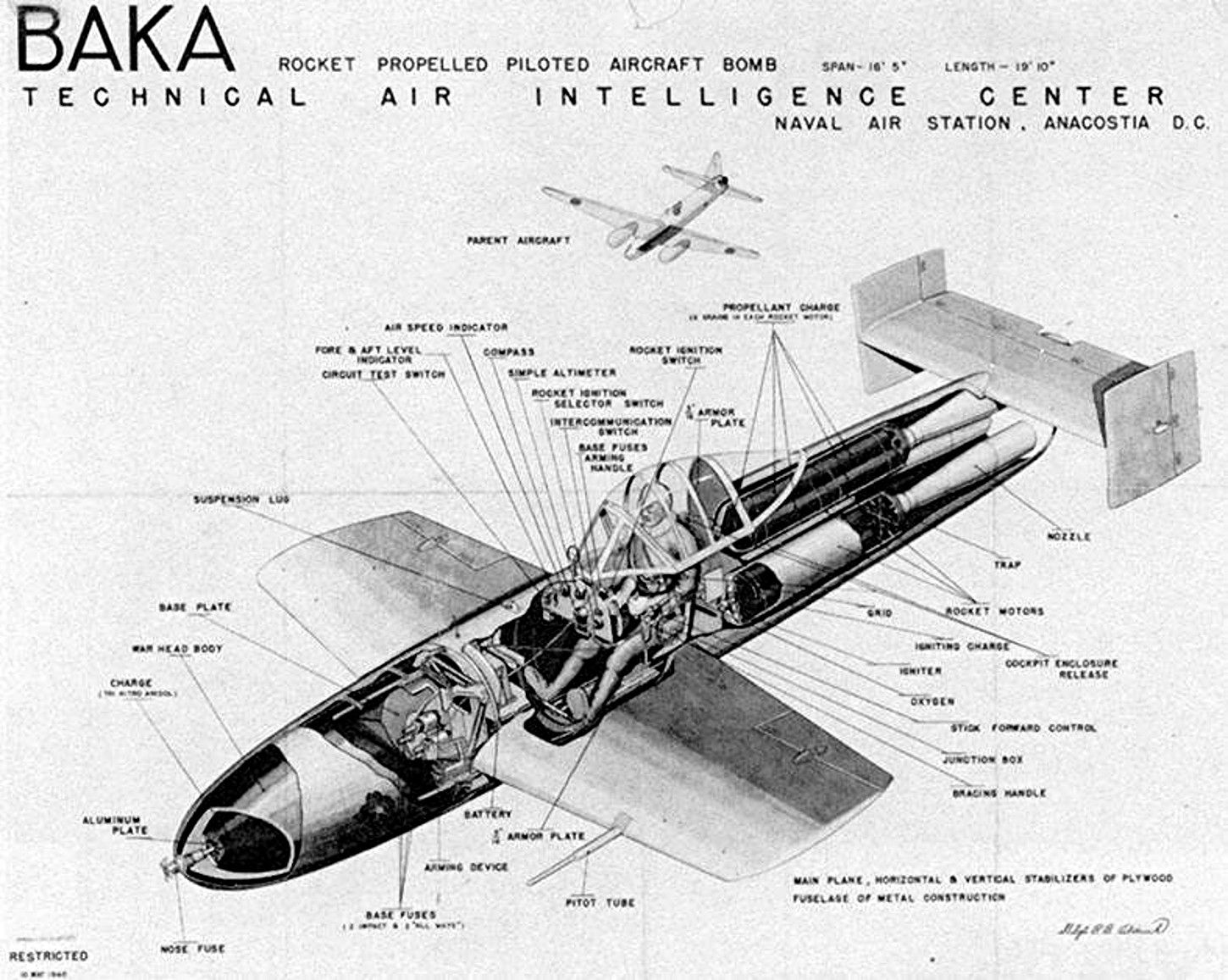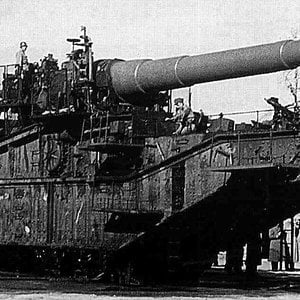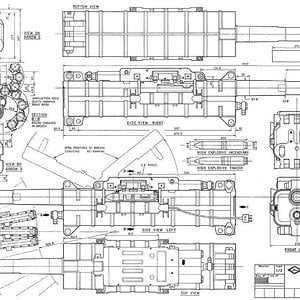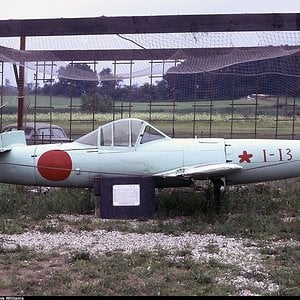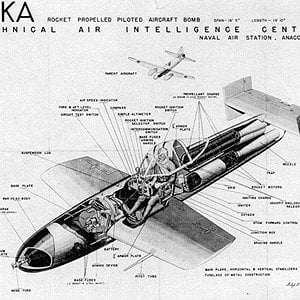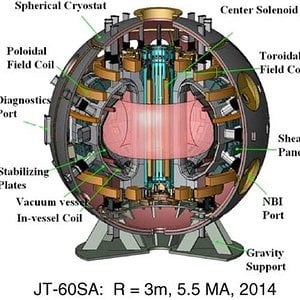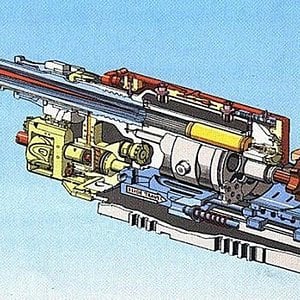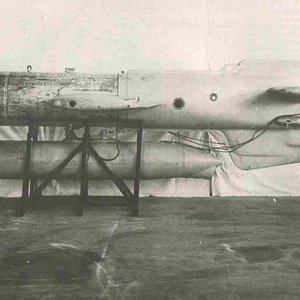Navigation
Install the app
How to install the app on iOS
Follow along with the video below to see how to install our site as a web app on your home screen.
Note: This feature may not be available in some browsers.
More options
You are using an out of date browser. It may not display this or other websites correctly.
You should upgrade or use an alternative browser.
You should upgrade or use an alternative browser.
The Yokosuka MXY7 Ohka was used mostly against American ships invading Okinawa, and if launched from its mothership, could be extremely effective due to its high speed in the dive.[13] In the first two attempts to ship the Ohkas to Leyte Gulf through aircraft carriers, the carriers Shinano and Unryu were sunk by the US submarines USS Archer-Fish and USS Redfish, preventing their presence at the Battle of Leyte Gulf.
On 21 March 1945, 16 Ohka-carrying "Betty" bombers were to be escorted by 55 Zeros to attack Task Group 58.1 (Hornet, Bennington, Wasp, and Belleau Wood). Another two "Bettys" were to escort and provide navigation and observation. Due to technical problems, 25 Zeros had to turn back or could not take off. The Ohka attack force was intercepted by 16 US Navy Grumman F6F Hellcat fighters and the Ohkas were immediately jettisoned by the "Bettys," some 113 km (70 mi) from the target. None of the "Bettys" returned, no ships were attacked and 16 of the Jinrai Butai were killed, with only 15 damaged Zeros making it back to their base.
Attacks intensified in April 1945. On 1 April 1945, six "Bettys" attacked the U.S. Fleet off Okinawa. At least one made a successful attack, with its Ohka thought to hit one of the 406 mm (16 in) turrets on the battleship West Virginia, causing moderate damage. Postwar analysis indicated that no hits were recorded and that a near-miss took place.[14] The transports Alpine, Achernar, and Tyrrell were also hit by kamikaze aircraft, but it is unclear whether any of these were Ohkas from the other "Bettys". None of the "Bettys" returned.
The American military quickly realized the danger and concentrated on extending their "defensive rings" outward to intercept the "Betty"/Ohka combination aircraft before the suicide mission could be launched.[14] On 12 April 1945, nine "Bettys" attacked the U.S. Fleet off Okinawa. The destroyer Mannert L. Abele was hit, broke in two, and sank, witnessed by LSMR-189 CO James M. Stewart. Jeffers destroyed an Ohka with AA fire 45 m (50 yd) from the ship, but the resulting explosion was still powerful enough to cause extensive damage, forcing Jeffers to withdraw. The destroyer Stanly was attacked by two Ohkas. One struck just above the waterline just behind the ship's bow, with the charge punching completely through the other side of the hull before splashing into the sea and detonating like a depth charge, causing little damage to the ship, and the other Ohka narrowly missed (likely due to the pilot being killed by anti-aircraft fire) and crashed into the sea, knocking off the Stanly's ensign in the process. One Betty returned. On 14 April 1945, seven "Bettys" attacked the U.S. Fleet off Okinawa. None returned. None of the Ohkas appeared to have been launched. Two days later, six "Bettys" attacked the U.S. Fleet off Okinawa. Two returned, but no Ohkas hit their targets. Later, on 28 April 1945, four "Bettys" attacked the U.S. Fleet off Okinawa at night. One returned. No hits were recorded.[14]
May 1945 saw another series of attacks. On 4 May 1945, seven "Bettys" attacked the U.S. Fleet off Okinawa. One Ohka hit the bridge of a minesweeper, Shea, causing extensive damage and casualties. Gayety was also damaged by a near-miss by an Ohka. One "Betty" returned. On 11 May 1945, four "Bettys" attacked the U.S. Fleet off Okinawa. The destroyer Hugh W. Hadley was hit and suffered extensive damage and flooding. The vessel was judged beyond repair. On 25 May 1945, 11 "Bettys" attacked the US Fleet off Okinawa. Bad weather forced most of the aircraft to turn back, and none of the others scored hits.
On 22 June 1945, six "Bettys" attacked the U.S. Fleet off Okinawa. Two returned, but no hits were scored. Postwar analysis concluded that the Ohka's impact was negligible with no US Navy capital ships actually hit during their attacks due to an extremely effective set of defensive tactics that were employed.
Variants
Model 43 K-1 Kai rocket assist trainers, note the landing skid
[edit] Operational variants
Kugisho/Yokosuka MXY-7 "Ohka" Model 11 Rocket Suicide Attacker. 755 built.
[edit] Non-operational variants
Kugisho/Yokosuka "Ohka" Model 21 Rocket Suicide Attacker. Steel wings; one built.
Kugisho/Yokosuka "Ohka" Model 22 Motorjet Suicide Attacker. 50 built.
Kugisho/Yokosuka "Ohka" Model 33 Turbojet Suicide Attacker. Renzan drop launch.
Kugisho/Yokosuka "Ohka" Model 43A Ko Turbojet Suicide Attacker. Submarine launched.
Kugisho/Yokosuka "Ohka" Model 43B Otsu Turbojet Suicide Attacker. Cave launched.
Kugisho/Yokosuka "Ohka" Model 53 Turbojet Suicide Attacker. Towed launch.
[edit] Trainer variants
Kugisho/Yokosuka "Ohka" K-1 Suicide Attack Trainer
Kugisho/Yokosuka "Ohka" Model 43 K-1 Kai Suicide Attack Trainer
General characteristics
Crew: One
Length: 6.06 m (19 ft 11 in)
Wingspan: 5.12 m (16 ft 9½ in)
Height: 1.16 m (3 ft 9⅓ in)
Wing area: 6 m² (64.583 ft²)
Empty weight: 440 kg (970 lb)
Loaded weight: 2,140 kg (4,718 lb)
Powerplant: 3 × Type 4 Mark 1 Model 20 rocket motors Solid propellant, 2.60 kN (587 lbf) each
Performance
Maximum speed: 804 km/h in dive (576 mph in dive)
Range: 36 km (23 mi)
Wing loading: 356.7 kg/m² (73.1 lb/ft²)
Thrust/weight: 0.38
Dive speed (3× Rocket motors Full-Boost): 1,040 km/h (650 mph)
Armament
1,200 kg (2,646 lb) Ammonal warhead
On 21 March 1945, 16 Ohka-carrying "Betty" bombers were to be escorted by 55 Zeros to attack Task Group 58.1 (Hornet, Bennington, Wasp, and Belleau Wood). Another two "Bettys" were to escort and provide navigation and observation. Due to technical problems, 25 Zeros had to turn back or could not take off. The Ohka attack force was intercepted by 16 US Navy Grumman F6F Hellcat fighters and the Ohkas were immediately jettisoned by the "Bettys," some 113 km (70 mi) from the target. None of the "Bettys" returned, no ships were attacked and 16 of the Jinrai Butai were killed, with only 15 damaged Zeros making it back to their base.
Attacks intensified in April 1945. On 1 April 1945, six "Bettys" attacked the U.S. Fleet off Okinawa. At least one made a successful attack, with its Ohka thought to hit one of the 406 mm (16 in) turrets on the battleship West Virginia, causing moderate damage. Postwar analysis indicated that no hits were recorded and that a near-miss took place.[14] The transports Alpine, Achernar, and Tyrrell were also hit by kamikaze aircraft, but it is unclear whether any of these were Ohkas from the other "Bettys". None of the "Bettys" returned.
The American military quickly realized the danger and concentrated on extending their "defensive rings" outward to intercept the "Betty"/Ohka combination aircraft before the suicide mission could be launched.[14] On 12 April 1945, nine "Bettys" attacked the U.S. Fleet off Okinawa. The destroyer Mannert L. Abele was hit, broke in two, and sank, witnessed by LSMR-189 CO James M. Stewart. Jeffers destroyed an Ohka with AA fire 45 m (50 yd) from the ship, but the resulting explosion was still powerful enough to cause extensive damage, forcing Jeffers to withdraw. The destroyer Stanly was attacked by two Ohkas. One struck just above the waterline just behind the ship's bow, with the charge punching completely through the other side of the hull before splashing into the sea and detonating like a depth charge, causing little damage to the ship, and the other Ohka narrowly missed (likely due to the pilot being killed by anti-aircraft fire) and crashed into the sea, knocking off the Stanly's ensign in the process. One Betty returned. On 14 April 1945, seven "Bettys" attacked the U.S. Fleet off Okinawa. None returned. None of the Ohkas appeared to have been launched. Two days later, six "Bettys" attacked the U.S. Fleet off Okinawa. Two returned, but no Ohkas hit their targets. Later, on 28 April 1945, four "Bettys" attacked the U.S. Fleet off Okinawa at night. One returned. No hits were recorded.[14]
May 1945 saw another series of attacks. On 4 May 1945, seven "Bettys" attacked the U.S. Fleet off Okinawa. One Ohka hit the bridge of a minesweeper, Shea, causing extensive damage and casualties. Gayety was also damaged by a near-miss by an Ohka. One "Betty" returned. On 11 May 1945, four "Bettys" attacked the U.S. Fleet off Okinawa. The destroyer Hugh W. Hadley was hit and suffered extensive damage and flooding. The vessel was judged beyond repair. On 25 May 1945, 11 "Bettys" attacked the US Fleet off Okinawa. Bad weather forced most of the aircraft to turn back, and none of the others scored hits.
On 22 June 1945, six "Bettys" attacked the U.S. Fleet off Okinawa. Two returned, but no hits were scored. Postwar analysis concluded that the Ohka's impact was negligible with no US Navy capital ships actually hit during their attacks due to an extremely effective set of defensive tactics that were employed.
Variants
Model 43 K-1 Kai rocket assist trainers, note the landing skid
[edit] Operational variants
Kugisho/Yokosuka MXY-7 "Ohka" Model 11 Rocket Suicide Attacker. 755 built.
[edit] Non-operational variants
Kugisho/Yokosuka "Ohka" Model 21 Rocket Suicide Attacker. Steel wings; one built.
Kugisho/Yokosuka "Ohka" Model 22 Motorjet Suicide Attacker. 50 built.
Kugisho/Yokosuka "Ohka" Model 33 Turbojet Suicide Attacker. Renzan drop launch.
Kugisho/Yokosuka "Ohka" Model 43A Ko Turbojet Suicide Attacker. Submarine launched.
Kugisho/Yokosuka "Ohka" Model 43B Otsu Turbojet Suicide Attacker. Cave launched.
Kugisho/Yokosuka "Ohka" Model 53 Turbojet Suicide Attacker. Towed launch.
[edit] Trainer variants
Kugisho/Yokosuka "Ohka" K-1 Suicide Attack Trainer
Kugisho/Yokosuka "Ohka" Model 43 K-1 Kai Suicide Attack Trainer
General characteristics
Crew: One
Length: 6.06 m (19 ft 11 in)
Wingspan: 5.12 m (16 ft 9½ in)
Height: 1.16 m (3 ft 9⅓ in)
Wing area: 6 m² (64.583 ft²)
Empty weight: 440 kg (970 lb)
Loaded weight: 2,140 kg (4,718 lb)
Powerplant: 3 × Type 4 Mark 1 Model 20 rocket motors Solid propellant, 2.60 kN (587 lbf) each
Performance
Maximum speed: 804 km/h in dive (576 mph in dive)
Range: 36 km (23 mi)
Wing loading: 356.7 kg/m² (73.1 lb/ft²)
Thrust/weight: 0.38
Dive speed (3× Rocket motors Full-Boost): 1,040 km/h (650 mph)
Armament
1,200 kg (2,646 lb) Ammonal warhead

